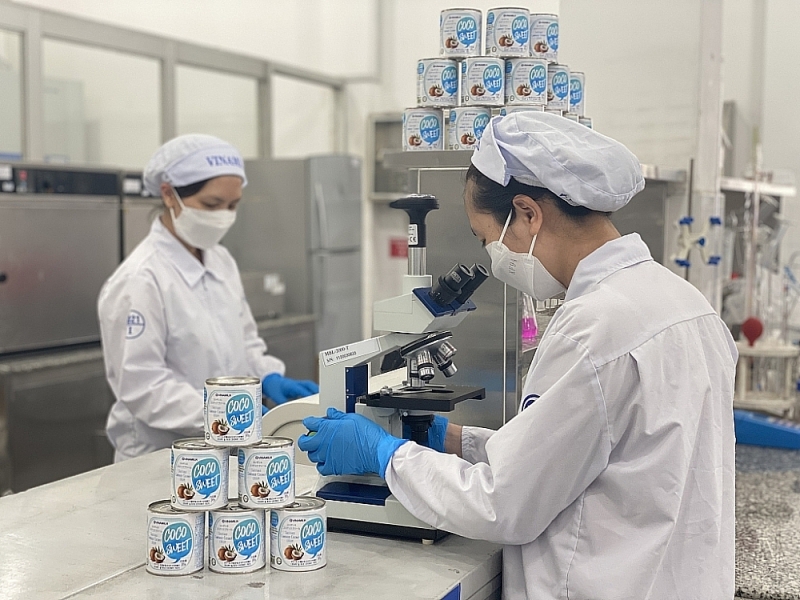 |
| Staff shortages are recorded in many sectors. Photo: X.H |
Supply and demand imbalance
On August 17, as reported in: “The situation of the labor market in 2022: Current situation and direction” by the VietnamWorks online job search site under Navigos Group, from the beginning of 2022 onwards, the recruitment market has bounced back with positive signals from production activities of enterprises, opening up many job opportunities for workers.
However, changes due to the impact of the Covid-19 pandemic have led to new trends in the job market and affected the demand for jobs of workers in recent years.
According to Ms. Duong Thuy Quynh, Communications Director of Navigos Group, the survey of more than 400 businesses and more than 3,000 job seekers in the Vietnamese market found that 87% of businesses had difficulties in recruiting in the first six months of the year. The main reason is due to an increase of active resignations from work compared to the same period in 2021; 12% of enterprises had a rate of voluntary leavers up to 30% – 40%.
Nearly 41% of enterprises have the highest employee turnover rate at 10% – 20%. This is a dilemma for businesses when the production and business situation needs to be boosted to catch up with the market recovery.
The recruitment market has an imbalance between supply and demand. In fact, the shortage of human resources in Ho Chi Minh City and Hanoi is on the rise. Specifically, the shortfall rate in Ho Chi Minh City is nearly 23% and in Hanoi it is nearly 15%.
The sectors with the largest shortage of human resources belong to the service sector – construction, architecture – real estate, wholesale, retail, restaurant, hotel, tourism, information technology, finance, accounting and audit.
However, for job seekers, the number of workers without stable jobs accounts for 40% of the surveyed participants.
The survey shows that 60% of job seekers still have a stable job at the company, 20% of leavers have found no new job, while 15% have already got a seasonal job, 2% have started their own business. Thus, it can be seen that the number of workers without stable jobs accounts for 40% of the number of job seekers participating in the survey.
Among the group of workers with stable jobs, nearly 80% of full-time employees intend to change jobs which means that amid the bounce back of the economy post-pandemic, most workers, even those with stable jobs, still want to find new opportunities to develop.
89% of businesses will actively promote recruitment
According to Ms. Duong Thuy Quynh, 89% of surveyed enterprises said that they will actively promote recruitment in the last six months of 2022 depending on the size and needs of businesses.
Enterprises with a size of 300 – 1,000 employees increase recruitment by 50% – 60%. Those with a size of 101-300 employees will raise their need by 10%-40%, while enterprises with less than 100 employees also have a higher demand for recruitment by 50% – 60%.
In addition, more than half of businesses said they would increase wages to retain talent and offer other options for employees such as learning cost support, new skills training; measuring human health by workload; health care – insurance; flexible working time and location.
In addition, the survey shows that 40% of enterprises will prioritize hiring workers with 2 years of experience or more; 28% will prioritize hiring workers with less than 2 years of experience and 24% will recruit team leaders.
The recruitment market will be vibrant with the very high demand for job search of workers. The data shows that 80% of workers at all surveyed levels said they are in need of job rotation and longing for a new job in the last six months of 2022.
Notably, the demand for jobs of the intern group is 92%, the graduate group from University, College accounts for 88%, the group of workers with less than 2 years of experience is 89%, the group with more than 2 years of experience. (non-managerial) is 78%.
Notably, the survey showed that the number of immediate job hoppers are 51% which further confirms the fierce competition for candidates in the labor market in the second half of 2022.
19% of job seekers will rotate jobs within the next 1-2 years and 12% will change jobs in the next 2 years. This is a group of workers who have stable jobs in the near future and will consider hopping jobs when the job market has completely recovered after the pandemic.
Given employment trends of workers in the last six months of the year, 65% of workers in most industry groups want to find a full-time job. Besides, the data from the survey shows that there have appeared new signals about highly flexible and adaptive work. Accordingly, “Telework” is favored in the consumer goods – service – sales business – import and export – real estate and e-commerce industries.
The majority of surveyed workers said they found it a little more difficult to find work at this time. Nearly half of people with more or less than 2 years of experience admit that they find it difficult to find a new job, at 45% and 46%, respectively.
